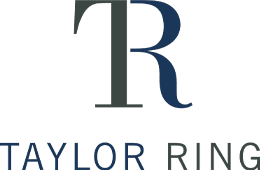What Is the Role of California Schools in Addressing Sexual Harassment?

Brock Turner was the former Stanford University student who, according to the New York Times, was convicted of sexually assaulting an unconscious woman behind a dumpster on campus. Turner wrote a letter to the judge blaming his behavior on a “party culture” and drinking for his actions.
The 23-year-old victim of Brock’s sexual assault was intoxicated and unconscious and had no memory of the assault, but at Brock’s sentencing, she read a 7,000 word statement about the shock she experienced when she discovered what happened to her during the attack, and what happened later.
Schools can help prevent harassment and assault
If these violent sexual assaults are a result of how children are socialized in relationships, then it is vital that the schools take some role in providing education about what is and is not appropriate behavior, and what is or is not sexual harassment.
The American Association of University Women conducted a study which found that about 48% of about 2,000 7th through 12th graders in a nationally representative survey reported having experienced some form of gender harassment during the school year, which included unwelcome sexual comments and gestures, being shown sexual pictures they did not want to see being touched in an unwelcomed sexual way, and being forced to do something sexual.
The National Women’s Law Center’s primer on sexual harassment reports that “Unlike flirting or good-natured joking, which are mutual interactions between two people, sexual harassment is unwelcomed and unwanted behavior which may cause the target to feel threatened, afraid, humiliated, angry, or trapped.” Sexual harassment in a school environment interferes with the student’s ability to obtain an education, and sexual harassment can take place either electronically (online in social media) or in person.
Also, under Title IX of the Educational Amendments of 1972, sexual harassment in federally funded schools is against the law. The U.S. Department of Education’s Office for Civil Rights underscored the following in a “Dear Colleague” letter: “The sexual harassment of students, including sexual violence, interferes with students’ right to receive an education free from discrimination and, in the case of sexual violence, is a crime…. Sexual harassment of students, which includes acts of sexual violence, is a form of sex discrimination prohibited by Title IX.”
The California Healthy Youth Act directs school districts to make sure that students in grades 7 through 12 receive age-appropriate instruction about human growth and development, comprehensive sexual education and HIV prevention education. The Orange County Department of Education outlines the five primary goals of the law:
- To provide pupils with the knowledge and skills necessary to protect their sexual and reproductive health from HIV and other sexually transmitted infections and from unintended pregnancy;
- To provide pupils with the knowledge and skills they need to develop healthy attitudes concerning adolescent growth and development, body image, gender, sexual orientation, relationships, marriage and family;
- To promote understanding of sexuality as a normal part of human development;
- To ensure pupils receive integrated, comprehensive, accurate and unbiased sexual health and HIV prevention instruction and provide educators with clear tools and guidance to accomplish that end;
- To provide pupils with the knowledge and skills necessary to have healthy, positive and safe relationships and behaviors.
The trusted Los Angeles sexual abuse attorneys at Taylor & Ring are dedicated to protecting your or your child’s rights if they have been sexually harassed or abused at school or under any circumstances.
At Taylor & Ring, our Los Angeles child sex abuse lawyers are determined to fight for you and help you obtain the justice you deserve if you or your child have been victimized by sexual abuse. You may schedule a free consultation by calling today at 310.209.4100 or using our contact form.

Serving clients throughout the Greater Los Angeles and Southern California area, we represent victims in a variety of civil litigation cases. If you or a loved one has been injured, turn to an experienced Los Angeles personal injury or sexual assault lawyer.
Find out more about Taylor & Ring.

